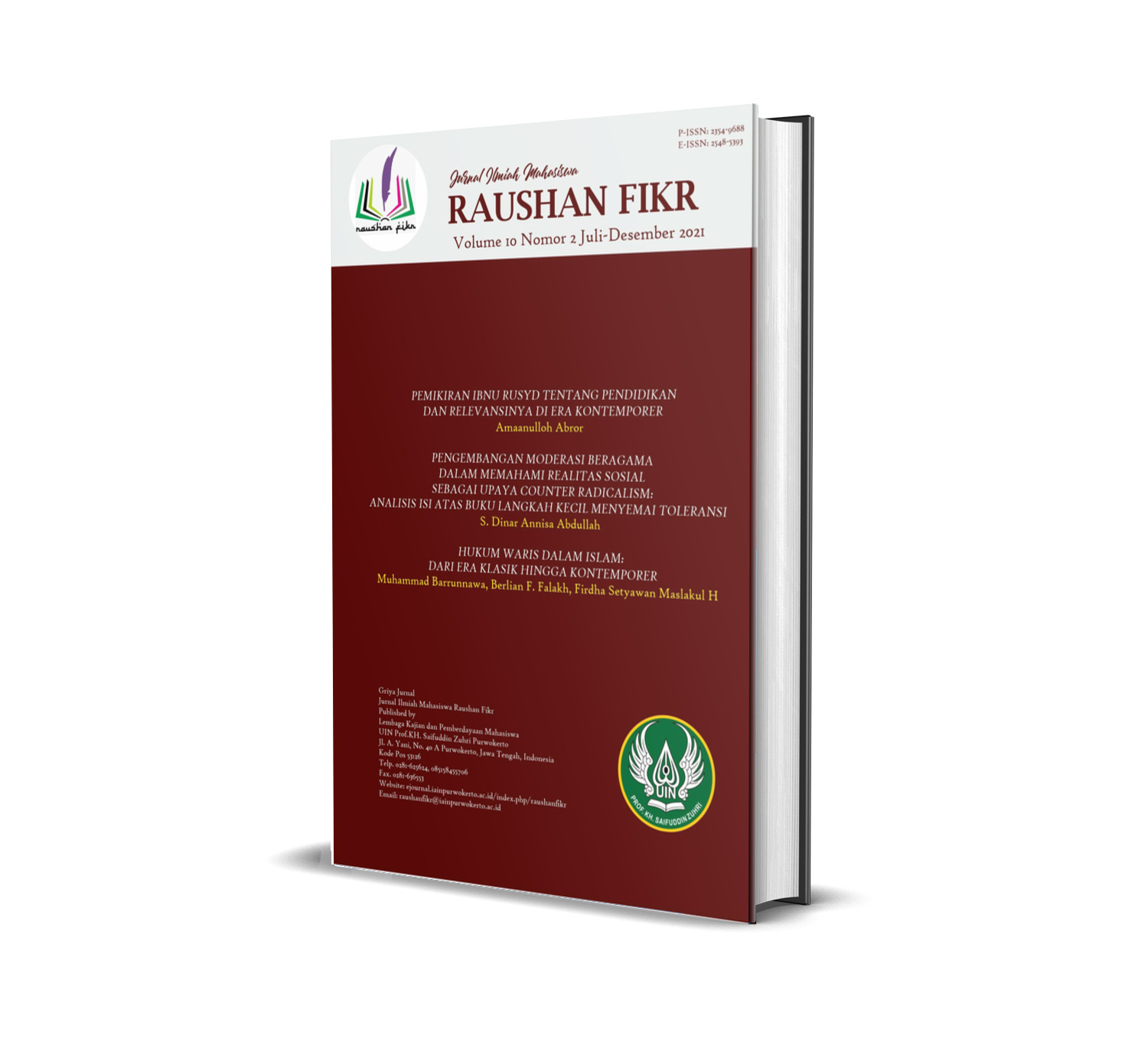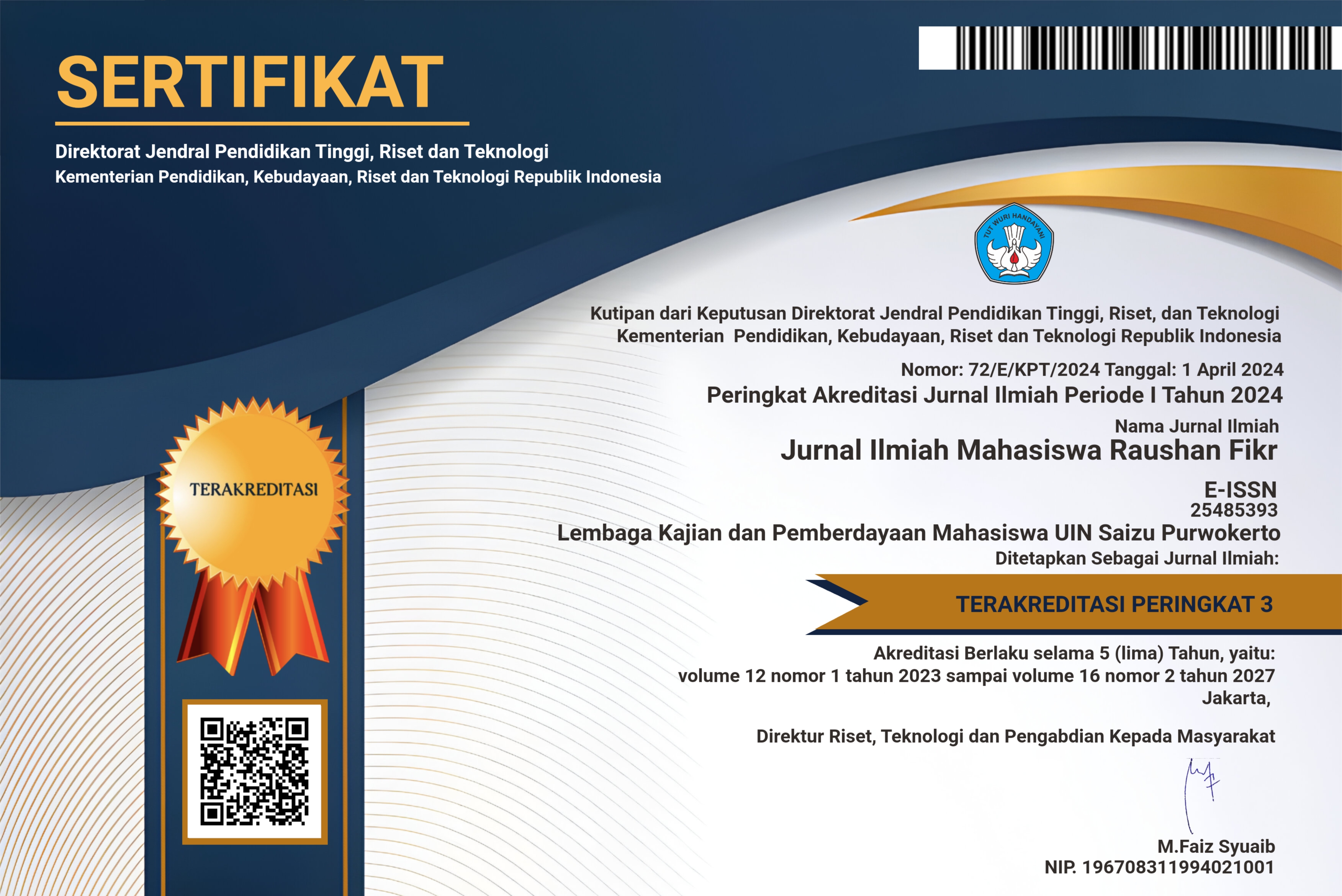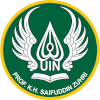Teori Pembelajaran Kognivistik dan Aplikasinya dalam Pendidikan Islam
DOI:
https://doi.org/10.24090/jimrf.v10i2.4947Kata Kunci:
Kognitif, Pembelajaran, Pendidikan Islam, Bruner, Ausubel, GagneAbstrak
Teori pembelajaran akan memudahkan bagi pendidik dalam menjalankan bentuk pembelajaran yang akan dilaksanakan. Artikel ini akan mengulas tentang teori pembelajaran kognitivistik dan akan memberikan pemahaman serta penjelasan secara utuh sehingga dapat diaplikasikan dalam kegiatan pembelajaran. Penelitian ini menggunakan pendekatan kualitatif dan termasuk penelitian kepustakaan (library research). Penulis berusaha dan berupaya untuk mengumpulkan data-data kepustakaan yang berkaitan dengan teori kognitif J. Bruner, Ausubel, maupun Robert M. Gagne dan aktualisasinya dalam pembelajaran PAI yang diperkaya dari beberapa sumber akademik baik dari buku, artikel ilmiah, kajian terdahulu maupun tulisan ilmiah lain yang berkaitan dengan topik artikel ini. Hasil penelitian ini adalah pertama, teori kognitif yang dikembangkan oleh J.Bruner menyebutkan proses kognitif adalah enaktif, ikonik, dan simbolik; Ausubel mengatakan bahwa proses kognitif adalah advanced organizer (pengaturan awal), progressive differentiation, reconcilasi reconciliation (integrative reconciliation), konsolidasi; Robert M. Gagne menyebutkan bahwa proses kognitif adalah melalui reseptor, sensory register, short-term memory, long-term memory, dan respose generator. Dalam pembelajaran PAI, kognitif dilaksankan melalui tahap-tahap asimilasi, akomodasi, dan equilibrasi, yaitu dalam proses pembelajarannya lebih diarahkan dan disesuaikan pada usia peserta didik.Unduhan
Referensi
Ausubel, David P. (1966). Meaningful reception learning and the acquisition of concepts. In Analyses of concept learning (pp. 157–175). Elsevier.
Baharuddin. (2015). Pendidikan dan Psikologi Perkembangan. Ar Ruzz Media.
Bruner, J. S. (1966). Toward a theory of instruction (Vol. 59). Harvard University Press.
Budiningsih, A. (2005). Belajar dan pembelajaran. Jakarta: Rineka Cipta.
Dewey, J. (1986). Experience and education. The Educational Forum, 50(3), 241–252.
Fahyuni, E. F. (2011). Efektivitas Media Cerita Bergambar dalam Meningkatkan Kemampuan Membaca Siswa. Skripsi. Dipublikasikan. Universitas Islam Negeri Surabaya.
Given, B. K. (2002). Teaching to the brain’s natural learning systems. ASCD.
Gredler, M. E. (1991). Belajar dan membelajarkan. Rajawali Pers, Jakarta.
Gunawan, I., & Palupi, A. R. (2016). Taksonomi Bloom revisi ranah kognitif: kerangka landasan untuk pembelajaran, pengajaran, dan penilaian. Premiere Educandum: Jurnal Pendidikan Dasar Dan Pembelajaran, 2(02).
Hariyanto, M. S. (2017). Belajar dan Pembelajaran: Teori dan Konsep Dasar.
Marhayati, N., Chandra, P., & Fransisca, M. (2020). Pendekatan Kognitif Sosial pada Pembelajaran Pendidikan Agama Islam. DAYAH: Journal of Islamic Education, 3(2), 250–270.
Mitsui, T., Wakayama, Y., Onodera, T., Takaya, Y., & Oikawa, H. (2008). Light propagation within colloidal crystal wire fabricated by a dewetting process. Nano Letters, 8(3), 853–858.
Niamah, K. (2021). Paradigma Pendidikan Islam Perspektif Al-Ghazali. HEUTAGOGIA: Journal of Islamic Education, 1(1), 59–71.
Nugroho, P. (2015). Pandangan Kognitifisme dan Aplikasinya dalam Pembelajaran Pendidikan Agama Islam Anak Usia Dini. ThufuLA: Jurnal Inovasi Pendidikan Guru Raudhatul Athfal, 3(2), 281–304.
Nurhadi, N. (2020). Teori Kognitivisme serta Aplikasinya dalam Pembelajaran. EDISI, 2(1), 77–95.
Pahliwandari, R. (2017). Penerapan Teori Pembelajaran Kognitif dalam Pembelajaran Pendidikan Jasmani dan Kesehatan. Jurnal Pendidikan Olah Raga, 5(2), 154–164.
Rowland, T., & McGuire, C. (1968). The development of intelligent behavior IV: Jerome S. Bruner. Psychology in the Schools, 5(4), 317–329.
Siregar, E., & Nara, H. (2010). Teori belajar dan pembelajaran.
Syah, M. (1995). Psikologi pendidikan suatu pendekatan baru. Bandung: Remaja Rosdakarya.
Wibowo, E. N. (2020). Model Pengembangan Kurikulum Pendidikan Islam Berbasis Multikultural dalam Menghadapi Ujaran Kebencian (Studi Prodi PAI Pascasarjana IAIN Surakarta). Jurnal Ilmiah Mahasiswa Raushan Fikr, 9(2), 89–97.
Unduhan
Diterbitkan
Cara Mengutip
Terbitan
Bagian
Lisensi
Authors who publish with this journal agree to the following terms:
- Authors retain copyright and grant the journal right of first publication with the work simultaneously licensed under a Creative Commons Attribution-NonCommercial-ShareAlike 4.0 International License that allows others to share the work with an acknowledgement of the work's authorship and initial publication in this journal.
- Authors are able to enter into separate, additional contractual arrangements for the non-exclusive distribution of the journal's published version of the work (e.g., post it to an institutional repository or publish it in a book), with an acknowledgement of its initial publication in this journal.
- Authors are permitted and encouraged to post their work online (e.g., in institutional repositories or on their website) prior to and during the submission process, as it can lead to productive exchanges, as well as earlier and greater citation of published work (See The Effect of Open Access).
















